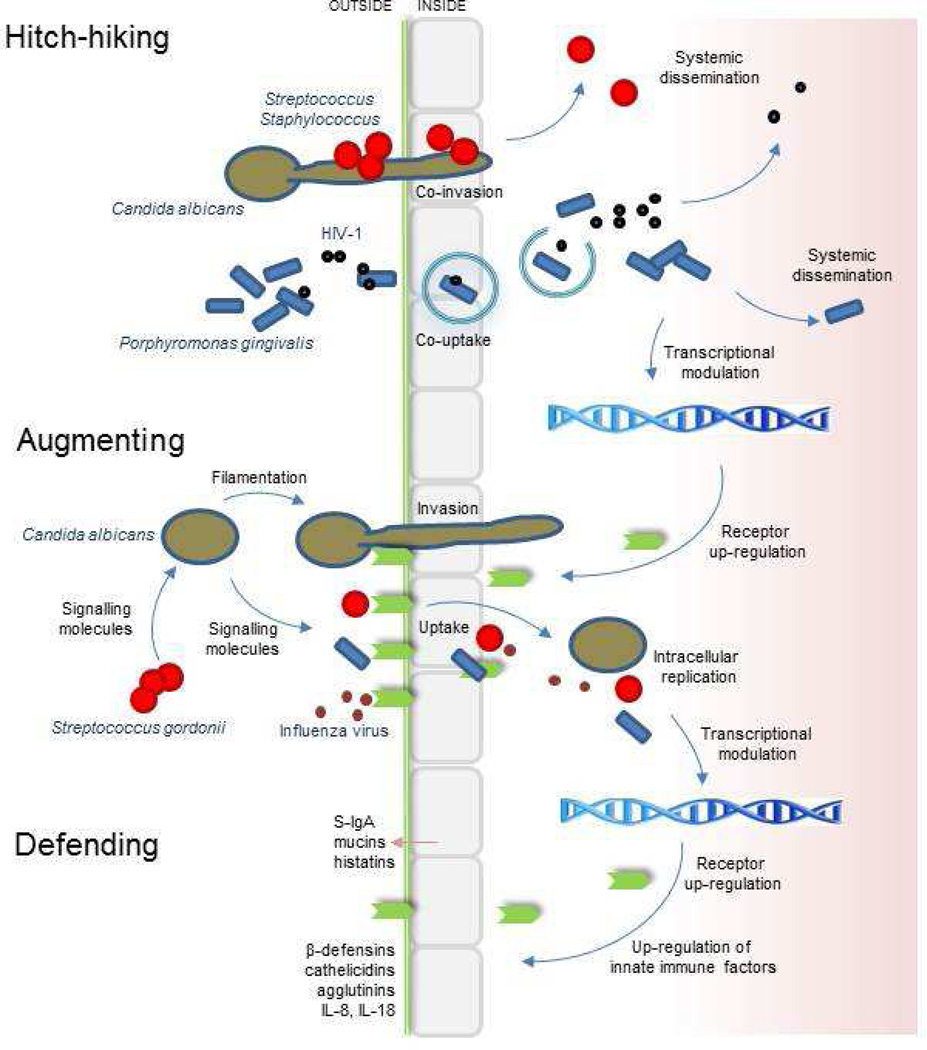Fig. 2.
Summary of interkingdom interactions associated with the oral microbiome and epithelial barrier. Hitch-hiking involves the carriage of one organism by another across the epithelial cell barrier, as exemplified in the diagram by interactions of fungi-bacteria and bacteria-virus. Bacteria-bacteria hitch-hiking is also documented [70] but is not shown. Hitch-hiking extends the repertoire of microbe-host cell interactions. Internalization may lead to degradation through autophagy pathways, intracellular replication, uptake by macrophages and systemic spread. Upregulation of surface receptors (e.g. E-cadherin, proteoglycans, integrins) as a result of microbial adhesion or invasion promotes secondary interactions e.g. influenza-Streptococcus pneumoniae. Signalling molecules produced by bacteria (e.g. AHLs) are able to modulate C. albicans hyphal morphogenesis and epithelial cells, while signalling molecules produced by fungi (e.g. farnesol) may affect bacteria and host cells. All of these various interactions may augment the virulence and pathogenesis of the oral microbiome. Host epithelial cell small-molecule responses to microbes include upregulation of antimicrobial peptides (e.g. β-defensins) and cytokines (not specifically addressed in this review paper). Agglutinins (mucin-like proteins) such as gp340 are macromolecular defences secreted by epithelial cells. Other macromolecular defence factors (e.g. mucins) are secreted by specialized cells. The reader is directed to the many recent specialist reviews on antimicrobial peptides, mucins, and other elements of innate immunity for further information.

